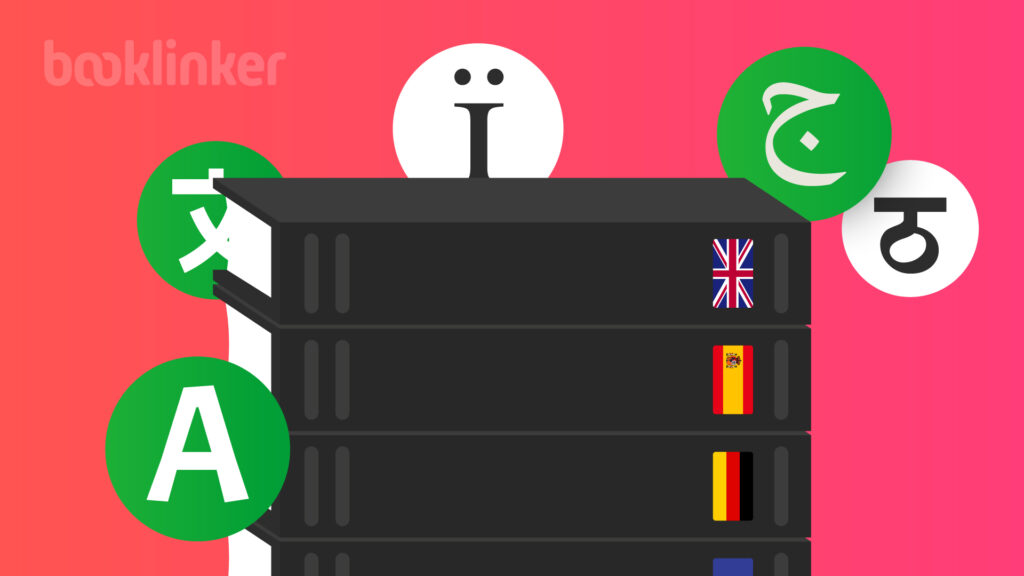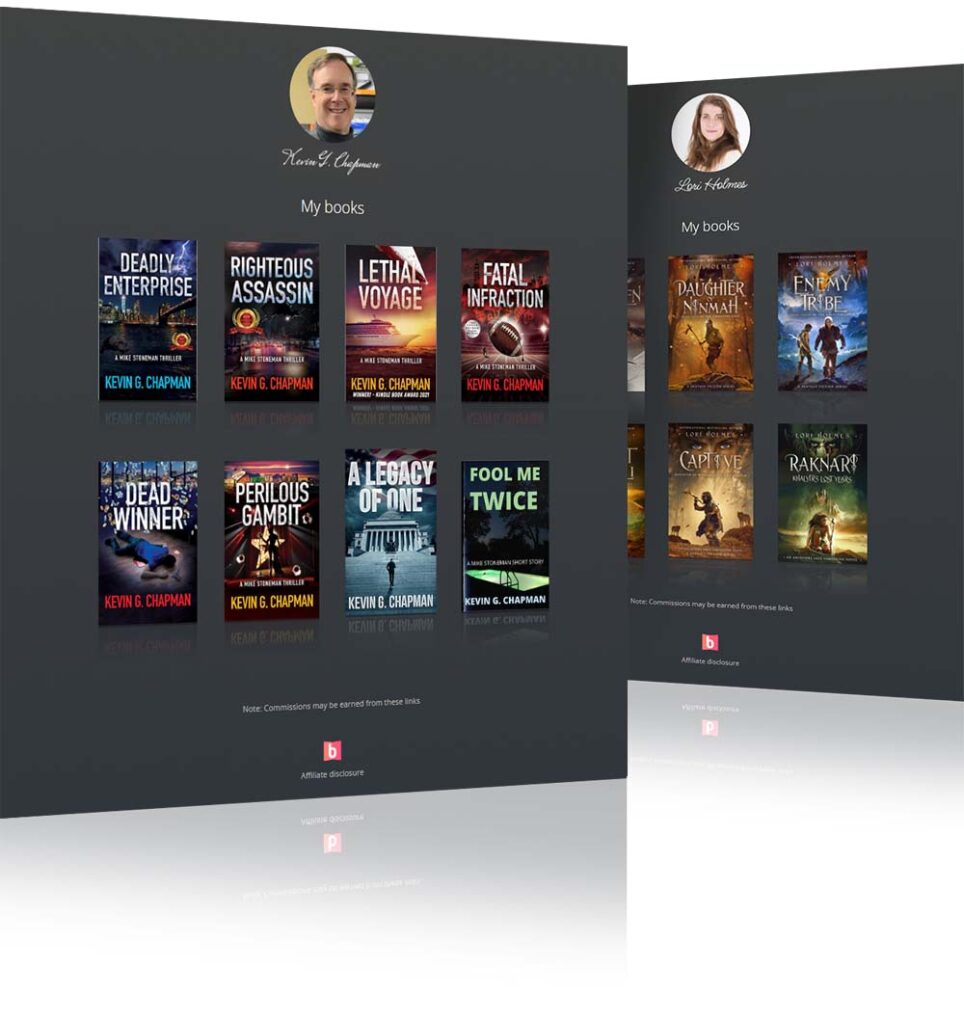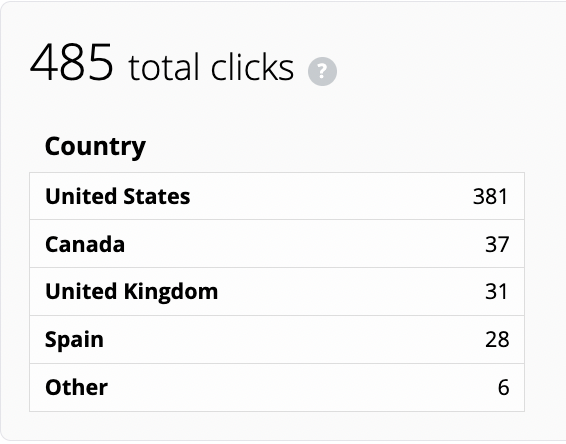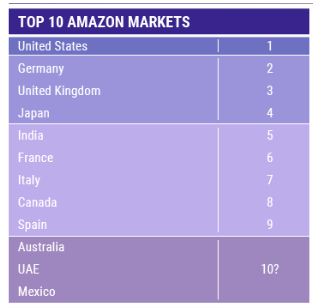
Translating a book is an exciting way for self-published authors to reach new audiences, sell more book copies, and build their author brand.
However, due to all that goes into the process, many authors put off translation, even though it has the potential to increase their bottom line, purely because they’re not sure where to start.
To help more authors release translated copies of their books, the Booklinker team spoke to Jenni Rempel, a self-published author with four books out, which a few of them have been translated into Spanish and German.
She is also the owner of NonStopReviews, a service that helps authors get honest reviews on their books.
In this article, Jenni will break down:
- Why an author should (and shouldn’t) translate their books
- When an author should look into book translation
- How to calculate expected translation ROI
- Guide to Identifying Which Languages You Should Translate to
- How to Find a Book Translator
- How to Ensure Your Book Translation is Quality
& More!

Free Universal Book Links
- Boost international sales by geotargeting readers
- Book store links update automatically based on availability
- Advanced marketing analytics
- Increase clicks with trusted links
Why should an author translate their book?
I recently attended Mark Dawson’s conference, The Self Publishing Show LIVE, in London.
Kristina Stanley, CEO of Fictionary and an award-winning fiction author, commented that it takes her around 100-150 hours for her to write a book.
Yet, it only took an additional five to 10 hours to release her translated book.
By hiring a translation service, she earned an extra income source by leveraging book content she already created.
For 99% of authors, their goal for translation is going to be to open up new revenue streams.
Why shouldn’t an author translate their book?
Book translation isn’t free, and it’s not always going to be profitable.
Before you can consider the translation process, you’ll first want to check a few things.
The first thing to ensure is that your book is already generating sales. There’s no point in translating a book that’s not already selling and validated by the market.
The ROI (return on investment) from the translation is going to take a long time to kick in if your book has no sales.
You also don’t want to divert time, attention, and money into translation that could be put into growing your author business.
Funds that you would spend on a translation generating little to no sales, could go into writing more books, or on other book marketing strategies like Amazon ads or social media.
I certainly noticed the biggest uptick in my publishing business when I published my second book. The number of books published matters. In fact, referring back to Mark’s conference, it was mentioned that where you really see a significant impact on your income is when you hit the 20-book mark.
Also, before thinking of translation, make sure the topic of your book spans different cultures.
For example, if you wrote a book about how to increase your credit score in the United States, that likely won’t translate well for an international marketplace.
In my case, all of my books are in the gardening niche. People all around the world love to garden and want to learn how to be self-sufficient in that way, so my books translate quite well.
What is the potential ROI for a translated book?
In order to determine the expected ROI and payback period for undergoing a book translation, you’ll first want to run some numbers.
Payback Period in months = (Cost to Translate) / ((Expected Translated Sales Per Month) * (Royalty Rate) * (Book Price))
- $500 to translate a book into Spanish
- You expect to sell two copies daily
- You’re earning a 70% royalty
- Your book costs $6
In this scenario, we’re looking at just a two-month payback period. As your book sales increase, the payback period only becomes shorter.
Tip!
- Asynchronous Translation: Keep in mind that it’s not going to be you performing a majority of the translation task, as you’re hiring help. After the payback period, all sales from there is straight profit.

Introducing:
Booklinker Collections
One landing page for all your books. 100% free.
One link for easy sharing of your books across your backmatter, websites, emails, and social media.
How do you find a book translator?
After running the numbers and projecting if book translation is going to be a profitable endeavor, it’s now time to hire a book translator.
Outside of doing the translation yourself, you really just have to decide whether you’ll be using a freelancer or a translation company.
Some of the best book translation services include:
In my case, I went with a translation service. Two to three weeks went by, and then, magically, I got an email saying, “Hey, guess what? Your translated copy is ready!”
And in that time, I was still working on my next book.
And I like that because, again, I want to be concentrating on my next book.
Hopefully, my next book is going to bring in a serious revenue stream.
I’m always feeding that funnel.
What would you recommend to ensure the quality of a translation?
I know some authors who take their translated manuscripts and publish them right away.
If you’re a more cautious person and are invested in the quality of the translation, I strongly recommend that you get a quality proofreader just like you would for a book in English.
Nothing drives readers crazier than spelling or grammatical mistakes. The opportunity for these errors is greater when you translate a copy. I don’t speak any other language, sadly, just a little bit of French.
I’m Canadian, so I have “survival French,” but I don’t have a way with any degree of quality or expertise, to proofread what’s been given to me.
Honest mistakes will happen.
How much does it cost?
As a blanket estimate, it’s safe to assume your book translation will cost anywhere between $500-$2000 depending on the language you’re translating your book to, as well as the length of the book.
I’ve only used one company, but I can tell you about that experience. All book translation costs were negotiated upfront. Once you agree on the price and the time, and sign the agreement, it takes about 2-3 weeks to get it back.
They do charge by the word, so for my books, which are all about 32,000-34,000 words, I paid about $500-$600 for a Spanish translation. The Spanish language is significantly cheaper than German, likely due to the lower labor costs.
I paid closer to about $800-$900 to get my book translated into German. This is still very inexpensive, especially when you consider that I likely spent about $4000 to produce my first book (and a lot of time!)
How did you choose which language you wanted to translate to?
I wasn’t very scientific in deciding which language to translate my book into. I had other people come to me from different author groups, and they were all saying, “Oh, I got my book translated into Spanish.”
I was like – oh, guess I’ll get my book translated into Spanish!
I’m making money on my translations, but it’s definitely nothing crazy. I’m doing probably about two to five sales a day.
I’m grateful for every little trickle of revenue that comes in.
Tip!
- KDP Dashboard for International Sales: Some other ways to get insight into which country you should translate your book into, is by looking at your KDP dashboard and seeing what countries your sales are coming from. This will most likely be English speakers in countries that tend to be bilingual.
Another way to identify language candidates for translation is by using Booklinker universal book links.
With these links, authors can get data on which countries their marketing links are getting clicks from, and use that to guide their decision.
For example, looking at the data below, we can see our book gets decent traction in Spain, and hints towards a Spanish translation doing well.

You can also try to get ahead of trends and identify fast-growing book markets. According to Mark Dawson, the German market is the fastest growing, so that’s where I’m concentrating now.
The United States is without a doubt the biggest and most important market, responsible for 67% of revenues, and it grew by 19% in 2021.
The three following markets: Germany, the United Kingdom, and Japan only add up to about 20% of marketplace revenues.

Frequently Asked Questions
What do you need to provide to have your book translated?
When getting your book translated, you’ll need to submit all of the things that you’d normally submit when publishing. I provide my book or PDF, the cover art, and the cover, as I’ll need the cover translated as well.
I also gave them my Amazon book description to translate for me. These are all of the things I need to publish, and they do the rest from there!
Is your process before publishing any different with a translation?
Once your book is translated, you’ll find that the process is really the same.
I’ll send my book translation over to my book formatter. I work with the same cover designer each time, so I’ll send her the cover, the new title, and the new book description for the back.
I have her take the original cover, insert the translated words, and have a new one made. I pay her a little less as the design work is already done.
Then, of course, you need all the different variations of your cover, your ebook copy, your paperback & hardcover, Audible copy, the page number, and the graphics changes.
How Competitive are International Markets?
One thing many authors don’t realize is that while the United States book market is by far the largest and most important market, many other markets are growing and they are underserved.
I read a Facebook Post today that mentioned how saturated the USA market seems to be, making it harder for their books to gain traction.
It’s also the most competitive.
Marketing in international markets will take less time and effort, costing you less money. Your Amazon ads cost significantly less, and I highly recommend using them to promote your book in all the different geographies it’s listed on.
Less competition in that marketplace gives your book a better chance to get exposure. So even though there may be fewer total sales in a genre, by ranking higher, you can capture similar levels of sales.

Introducing: Booklinker Collections
One landing page for all your books. 100% free.
One link for easy sharing of your books across your backmatter, websites, emails, and social media.
Conclusion
Overall, book translation is something that most authors should look into once they have traction with their book. It can be done simultaneously with writing other books and lets authors leverage the content they’ve worked so hard on even more.
If you have any more questions about book translations, be sure to drop a comment, and either the Booklinker team or Jenni will get back to you promptly.
Author
-
Jenni Rempel is the owner of NonstopReviews.com, a company dedicated to helping indy authors and publishers gain reviews through done-for-you strategies. This family-run business helps authors who haven’t even published their first book to authors with several published books already. Jenni is also a passionate gardener, herbalist, and the author of 3 books from The Homesteader Herbs Series.
https://nonstopreviews.com%20




One Response
Dear Jenni, interesting article. Translation companies referred to in this article use freelancers to do the work.
You mention Babelcube, for example: I noticed that many translators have complained about payment with Babelcube. Professionally-speaking, I prefer to be paid a per project-fee for my translations, and maybe add or not add royalty payments. Always check the conditions of use. Babelcube writes: “Please note that Babelcube exclusively utilizes the royalty payment model for transactions. Any alternative compensation rates fall outside the scope of Babelcube transactions.” (Jona, 8/27/2023)